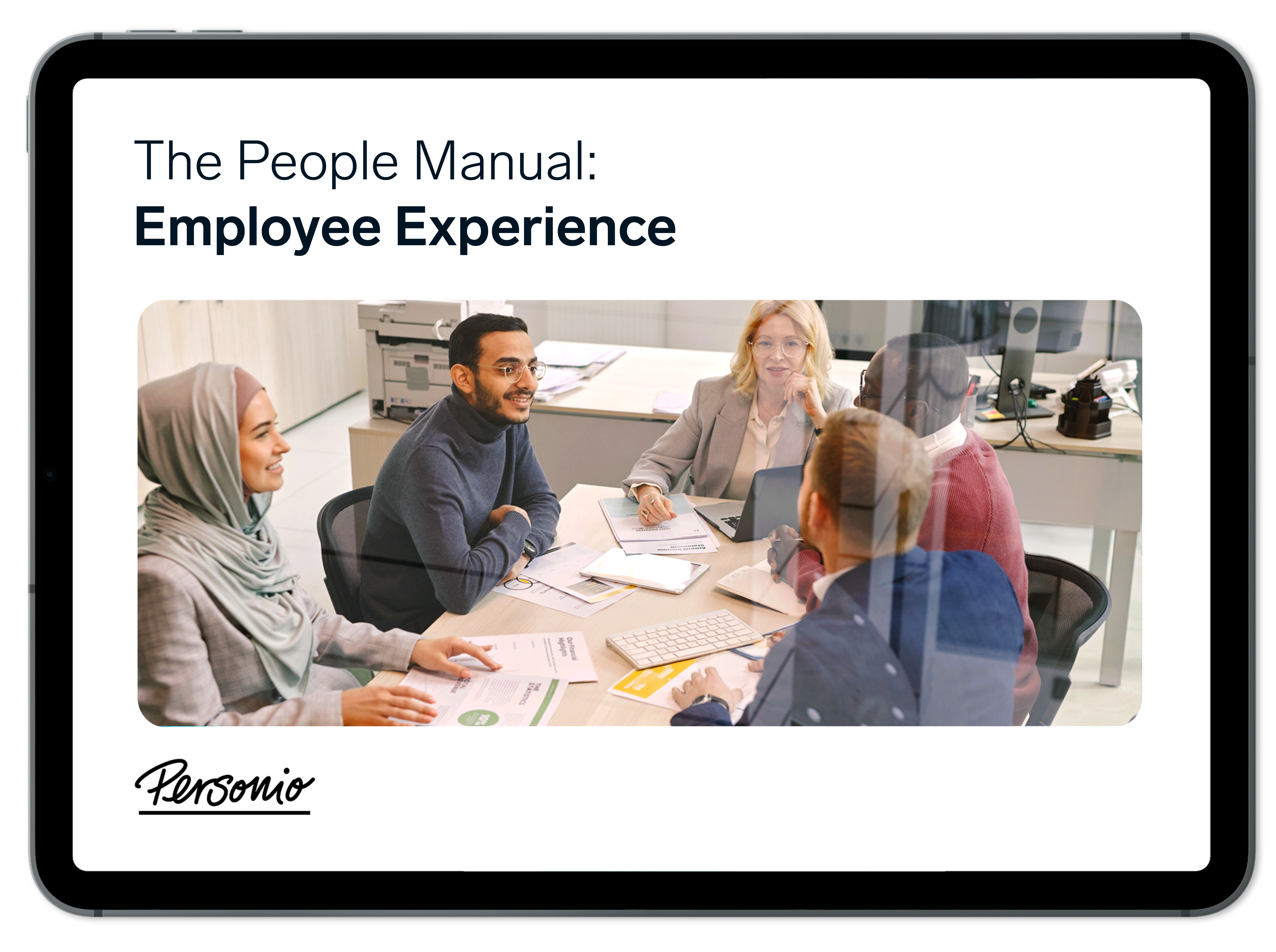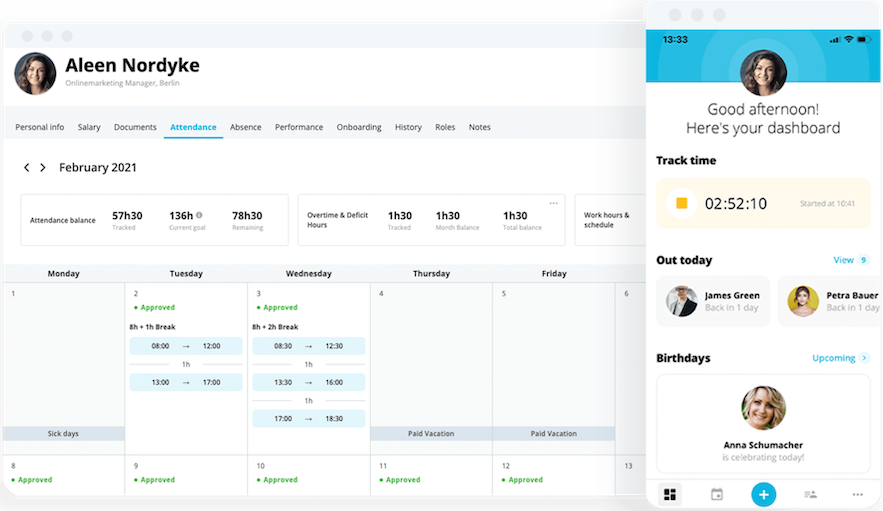Try these seven employee engagement strategies

Looking to figure out how to improve employee engagement in the workplace? We've put together a helpful list of our top seven employee engagement strategies to help create more engaged employees in a short span of time. Read on to learn more...
Employee engagement defined
Employee engagement is the understanding and measurement of employee motivation related to productivity. It includes multiple elements of happiness, satisfaction, purpose and collaboration amongst your workforce.
The purpose of employee engagement hinges on the relationship between employee satisfaction and business success. Based on research by Gallup, a workforce of more engaged employees can result in:
10% increase in customer satisfaction and ratings
20% increase in sales revenue
Engaged workers do better work. But, for employee engagement to work it needs to be strategic. Organisations need to pull together tangible initiatives that result in happier, more productive employees (more on that later in this article...).
Is employee engagement the same as employee satisfaction?
While an employee may be satisfied with their role, enough to show up for work and do their best, they may not necessarily be engaged.
While an employee might be satisfied to show up, they may not be committed to sticking around if a better offer comes up. Or, they may not be as invested in doing their best (think of a concept like quiet quitting, for instance).
Therefore, engagement is how likely an employee is to stick by an organisation.
What is total employee experience?
Total employee experience is quickly gaining popularity as another term for ’employee engagement.’ Essentially, it means the same thing, but sums up everything an employee ‘feels’ about their work while trying to understand, quantify, and build strategies in order to optimise it. You can keep it in the back of your head as we move along.
Are UK workers engaged?
CIPD’s ‘Good Work Index‘ found that around two-thirds of employees were satisfied with their jobs overall. But, on a day-to-day basis, only a bit more than half were satisfied.
This is an interesting element of employee engagement, because there is both the big-picture and day-to-day approach for workers.
The 7 benefits of employee engagement
As we move along in this article, we obviously want to introduce some employee engagement strategies that help boost the satisfaction of your workforce. But, what’s the impetus behind doing that? What kind of results can we see?
Beyond the business-related impact previously mentioned, Gallup also mentioned, based on analysis of 2.7 million employees across 96 countries, that engaged employees track with the following metrics:
81% lower absenteeism
18% – 43% lower employee turnover
28% less shrinkage (theft)
10% higher customer loyalty and engagement
18% higher sales productivity
23% higher profitability
Basically, happy employees work better, stick around longer, behave better and develop a deeper and more meaningful connection to their place of work.
Half a decade of insights on employee experience

Our "People Manual" covers all things related to employee experience and developing initiatives that result in more engaged employees. Grab your free copy right now.
Download It TodayWhat influences employee engagement?
Employee engagement can be influenced on three levels:
Employee-employee
Employee-manager
Employee-company
Each of the three has its own unique characteristics and dimensions, so let’s break them down a bit more:
Employee-employee | This is both the relationships employees have with their colleagues, as well as the relationships they have with themselves (their intrinsic values, motivations, and long-term goals). Employees form the basis of engagement — it’s right in the name! — so how they feel typically comes first. |
Employee-manager | The relationship between an employee and their leader is critical. This will typically be a key determinant in how employees feel about their role, work, responsibilities, and even the company. After all, almost half of workers in the UK (49%) have quit their jobs due to their relationship with their boss (Totaljobs). |
Employee-company | While this relationship might borrow a bit from the employee-manager relationship, the way an employee feels about their company is critical. This could be determined by what they think the company values, the culture of work, and how the company approaches problems (and how that relates to how that influences their work or goals). |
How do you gather employee engagement data?
First, you need to enable your workforce to share how they currently feel through a wide range of channels. This will allow them to share their insights, so you can have a graspable understanding of just how engaged your employees are.
Some of the key ways that employers do this is through:
Quarterly or half-year engagement surveys
Annual engagement surveys
Engagement-based questions during performance reviews or appraisals
Focus groups on specific topics of subject matter
These are all rather qualitative measures to help build a foundation for an engagement framework. Your team may also want to consider metrics like staff turnover, sick days, and other absence types to try and get a handle. These can also have an influence on engagement, especially when placed within a quantitative context.
4 key ways to enable employee engagement
The Macleod Review, a report from 2009, identified four key ‘enablers’ of engagement:
Leadership – The overarching ‘strategic narrative’ that drivers organisations.
Line Managers – On-the-ground leadership that motivates employees every day.
Employee Voice – The autonomy employees feel to be involved and make decisions.
Organisational Integrity – Values that drive an organisation and create emotional connections.
We should think about each of these as an employee engagement framework. Essentially, every initiative you undertake should speak to one of these. So, let’s talk about what your organisation can do…
7 key ways to improve employee engagement
Now that you know a bit more about employee engagement and satisfaction, what differentiates it, and who drives it, let’s now talk about the ways you can make it real and improve it.
Here are seven focus areas your organisation can hone in on to promote employee engagement:
1. Employer branding
Organisational buy-in begins even before an application. That’s why employer branding can play such a large role in employee engagement because it connects future employees to your company before their first day is even in sight. It motivates people to want to work for your company, based on the mission, roles, developments, rewards, and the values for which your company stands. Don’t forget to focus on employer branding!
Download our Employer Branding eBook today for the full story.
2. Candidate experience
Focusing on candidate experience can be a key access point to higher employee engagement. That’s because candidates, as they make their way through the application funnel, already begin to develop an opinion on their future organisation. So, when they have a good, streamlined, and communicative process, that level of commitment to the organisation is already increasing before their first day.
Do you have a proper Applicant Tracking System (ATS) in place? Discover Personio’s today.
3. Onboarding processes
Employees make up their minds quickly, which is why a proper onboarding process can make or break long-term employee engagement. That’s because things like role clarity, organisational narrative, and relationships between employees and managers all begin in this phase. So, you need to have a structured, well-outlined, and in-depth onboarding process that sets employees up for success and long-term satisfaction.
4. Referral programmes
Often, the best talent is the one that’s already known. Not necessarily by employers, but by the employees themselves. By putting an employee referral programmes in place, you can begin to tap into the networks of your talented employees and the people they know. This helps employees feel as though they have a voice, and can directly contribute to company culture (establishing a deeper connection down the road).
5. Employee development
Development initiatives are one of the most critical things an organisation can implement to boost employee engagement. Typically spearheaded by HR, this can include things like
Development budgets – To empower employees to learn.
Workshops – Mandatory or not, to help develop key skills and training.
Coaching – For managers, to help them get the best out of their reports.
Each of these helps employees feel that they are getting better at both what they do, and what they potentially want to do in the future. So, they stick around because they feel a sense of consistent and continuous improvement.
6. Performance management
How your organisation approaches performance is imperative to having higher engagement scores. That’s because, when done right, performance can ensure that employees feel they have a voice, it can develop their relationship with managers, and it can serve as a kind of ‘reset’ button to help re-align and recognise where they fit into a company’s value system.
That’s why having a performance management cycle, and a place to document everything transparently, is so important. Employers can start here by implementing a cycle, and an HRIS that can help house that same cycle.
7. Succession planning
Succession planning sets an example. Even when an employee leaves, which is impossible to prevent, it is important to have a process that helps the remaining employees still feel attached to their company. While highly engaged employees are 59% less likely to seek out a new job, it’s still not 100%.
If you have a succession planning process in place, it can help not only ensure that employees have a seamless exit from the organisation, but that remaining employees are involved, have a voice, and things are communicated transparently (so that any additional workload doesn’t become a nasty surprise on their desk).
Click here to read more about building a succession planning process for engagement.
How do you make engagement a priority at work?
The first step is to have the time to focus on it. As we can see from the above, there are a myriad of options at your disposal when it comes to employee and staff engagement initiatives. But, what you really need is to free yourself from the administrative work taking up most of your current time.
An HR software, just like Personio, can help. Whether with onboarding, applicant tracking, performance, or reporting, it can give you back the time you need to focus on building and executing an employee engagement framework that gets results.
